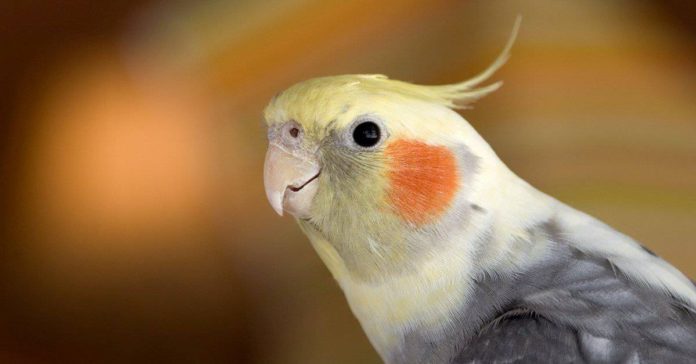Last Updated on January 3, 2024 by Fumipets
9 Types of Cockatiel Varieties: Exploring the Colorful World of These Charming Birds
Cockatiels, with their distinctive crests and charming personalities, are among the most popular pet birds in the world. Known for their affectionate nature and relatively easy care, these Australian natives come in a variety of stunning colors and patterns.
The different types of cockatiel varieties are a result of selective breeding, which has led to an array of visually distinct and beautiful birds. From the classic grey to the vibrant lutino, each variety has its own unique characteristics and charm.
In this guide, we’ll explore the diverse world of cockatiel varieties, delving into the features that make each one special. Whether you’re a seasoned bird enthusiast or considering adopting one of these feathered friends, understanding these varieties will deepen your appreciation for these delightful birds.
Types of Cockatiel Varieties
The coloring of Cockatiels is produced by pigments. Blue and grey are among the darker hues created by melanin pigments. Carotenoid pigments are used to create lighter hues like yellow and orange. When a pigment gene is altered or silenced completely, cockatiel mutations happen. Pigment mutations may be passed down from one generation to the next, allowing breeders to produce Cockatiels in a variety of colors and patterns. You should be aware of these 9 cockatiel hues and mutations:
The 9 Cockatiel Varieties & Colors
1. Gray Cockatiel
Gray cockatiels are regarded as “normal” parrots since they do not exhibit any mutations in the pigment gene. Their wings and tails are white, while their bodies are gray. They frequently have orange spots on their cheeks as well. When fully grown, female adults have yellow spots on their heads whereas males often have totally yellow heads. One of the most typical cockatiel hues is this one.
2. Yellowface Cockatiel
These cockatiels resemble the “regular” grey ones in many ways, with the exception that the spots on their cheeks are yellow rather than orange. On top of their heads, they may have yellow feathering. However, other than on their heads, their bodies should be white and grey with no indication of color changes.
3. Whiteface Cockatiel
While the Yellowface and Grey (normal) keep their grey and white bodies, these birds don’t have any orange or yellow markings on their faces. Male adults have white heads that may have gray patterns. Typically, a woman’s face is entirely grey.
4. Pearl Cockatiel
The distinctive feature of pearl cockatiels is the array of spots they exhibit on their bodies, wings, and heads. These blotches are called pearls, therefore their names. Most pearl spots are white. These cockatiels occasionally display light yellow coloration on their faces, but their cheeks are normally orange.
5. Silver Cockatiel
These cockatiels’ initial gray colour has been altered by several pigment gene mutations they possess. Their grey feathers seem silvery because of their mutations. The wing and tail feathers do contain some white patterns. Their head feathers frequently take on a yellow tint, and their cheeks are typically yellow or orange.
6. Fallow Cockatiel

The bodies of fallow or cinnamon cockatiels are a subdued, yellowish-brown color. On the wings and bottom, there may still be some gray colour visible. Their white heads may have some yellow coloring, and their eyes may have a faint red tint.
7. Pied Cockatiel

Random white patches may be seen on the bodies of these cockatiels, where color has been entirely subdued. Anywhere on the body may have one of these white patches, which can be of any size or form. As a result, no two Pied Cockatiels have the same appearance. The Pied Cockatiel does have yellow top feathers and orange cheeks.
8. Lutino Cockatiel
The lack of melanin in Lutino cockatiels results in their lack of grey colour. The bodies of these cockatiels are normally entirely white, but occasionally the area surrounding their wings will be colored bright yellow. Their features are generally yellow in color, with orange cheekbones, red eyes, and red eyes.
9. Blue Cockatiel
Although blue cockatiels are entirely white, they have black wing patterns and blue tail colors. They don’t have any colorful patches on their cheeks, and unlike many other cockatiel varieties, they rarely have yellow colour on their heads. These birds are among the most uncommon varieties of cockatiels kept in captivity.
Conclusion
When purchasing a cockatiel, you may pick from a wide variety of colors and mutations. It’s crucial to keep in mind that all cockatiels, regardless of color or mutation variance, belong to the same species and require the same long-term health and care requirements. Therefore, you don’t need to become an expert on the specific hue of cockatiel you desire. Just be certain that you are aware of how to generally care for cockatiels. Which color or cockatiel variant is your favorite? In the area below, where you can leave comments, we want to hear from you.
Q&A on Types of Cockatiel Varieties
1. What is the most common variety of cockatiel?
The most common variety of cockatiel is the Normal Grey. This variety closely resembles wild cockatiels in Australia, featuring a grey body, yellow face, and orange cheek patches.
2. What is a Lutino cockatiel, and how is it different?
A Lutino cockatiel is a striking variety known for its bright yellow and white feathers, with red or orange cheek patches. It lacks the grey coloration found in Normal Greys, resulting from a genetic mutation that eliminates grey pigmentation.
3. Can cockatiels have different crest types?
While the shape and size of a cockatiel’s crest can vary slightly, there isn’t a specific variety categorized by crest type. The crest often reflects the bird’s mood, standing upright when excited and flattening when scared or angry.
4. What is a Pied cockatiel?
A Pied cockatiel is a variety characterized by an irregular pattern of coloring. Pied cockatiels have patches of their base color (such as grey or cinnamon) mixed with white or yellow, making each bird uniquely patterned.
5. Are there any rare varieties of cockatiels?
Some of the rarer cockatiel varieties include the Whiteface, which lacks the typical yellow and orange coloring, and the Silver cockatiel, known for its silver-grey feathers. Rarity often depends on the region and the availability of specific breeding pairs.


















